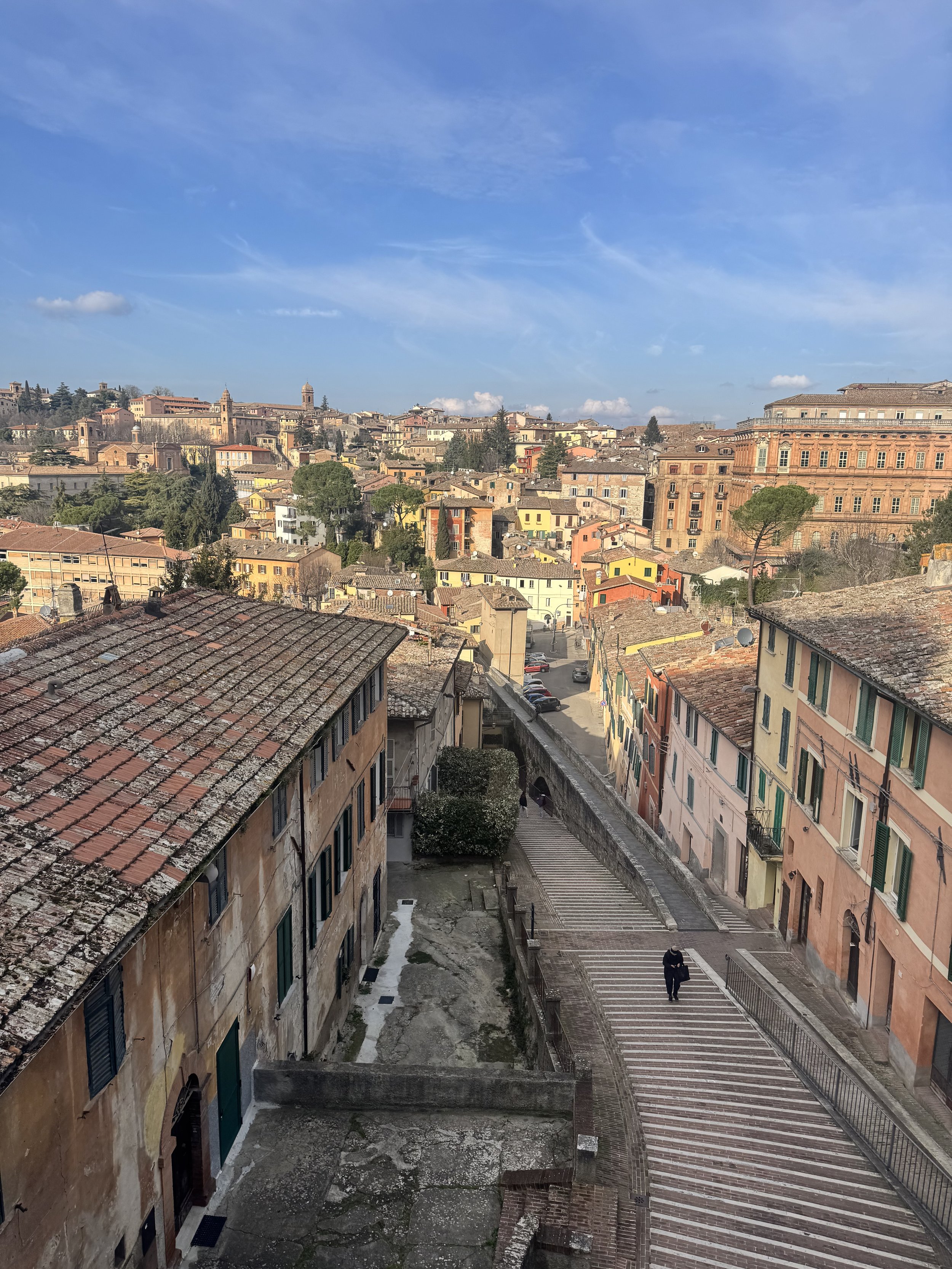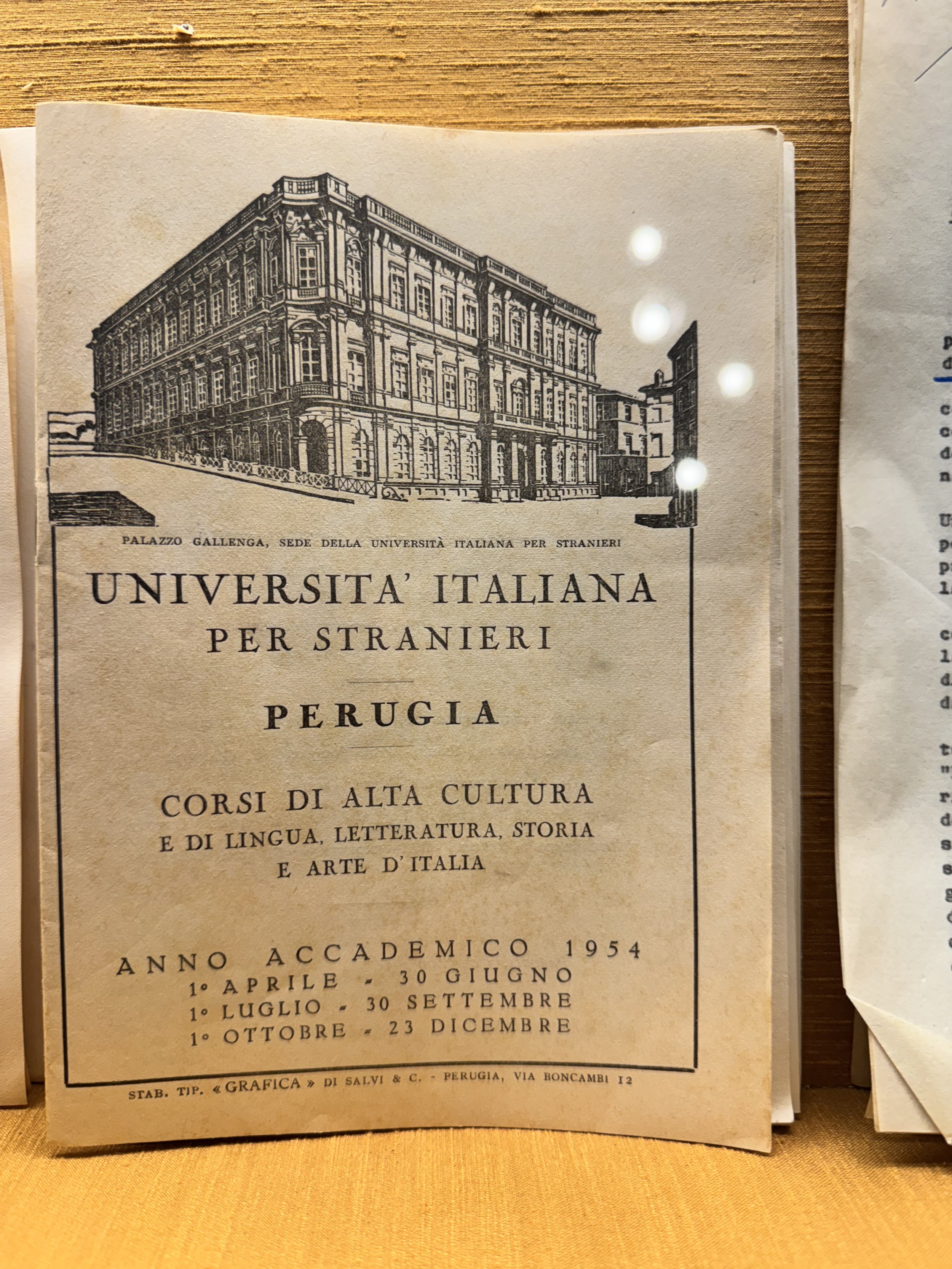Perugia So Far: Truffles, Language Learning, and a Breath of Fresh Air
If only my 15-year-old self could see me now—overlooking the hills of Perugia on my way to my morning Italian class. I traded coffee under the porticos for coffee by the panoramas (well, I’m trying to cut down on sugary brioche, but that’s quickly been replaced with decadent hot chocolate). These days, life in Perugia fills me with a breath of fresh air—figuratively and quite literally—as I’m surrounded by nature instead of smog. I’m indulging in fresh black truffle and eager to learn how to make the ragù cinghiale. Biking has been replaced with hiking up the endless stairs throughout town. I am doing what she daydreamed about—and perhaps even more.
The first Italian city I learned about was Bologna, and the next was Perugia. I remember my class—mostly Bronx Italian-Americans—going around discussing where their families originated from. Almost everyone said Sicily, whereas my Italian teacher’s family came from Umbria. From then on, I would occasionally see Perugia mentioned in a passage. To my friends in Italy, both Italian and foreign alike, Perugia—and Umbria in general—lies more on the mysterious side. I hear everything and anything about the North or South, but hardly ever about the middle. Visiting Perugia was a must, and taking an Italian course here was a bucket-list dream. And what better time than post-graduation? I ate my last tigelle, took my final walk around the porticoes, then packed my bags and took a three-hour train ride to Perugia—saying goodbye to San Luca, passing through Tuscany, and entering the land of Etruscan architecture and medieval towns.
A university filled with history
If the name doesn’t say it all, the University for Foreigners in Perugia, along with the University for Foreigners in Siena, is specifically designed for foreigners learning Italian language and culture. They serve as centers for official Italian language certification (CILS in Siena, CELI in Perugia). In regal classrooms—similar to those in Bologna or on the Ravenna campus—I take my morning Italian course. My B1 class consists of students from all walks of life, all with some connection to Italy: those needing to take the citizenship test, exchange students, workers, retirees who bought houses in the countryside. It’s truly an immersive environment because I’m practicing the language in and out of the classroom. The course moves at a slower pace, which can be a plus for some learners. The magic of being at the Università per Stranieri in Italy is that they are used to interacting with foreigners speaking Italian at varying levels, accents, and capacities. There’s less awkwardness and less of a tendency to switch to English—something I often ran into in Bologna and other major cities, especially during tourist season.
Sure, being in Italy is immersive on its own, but admittedly, in Bologna—especially as local places shut down and were replaced with mortadella shops—I used less Italian over the years. I saw an infographic that ranked Emilia-Romagna among the highest regions in Italy for English language proficiency. Much of daily life, whether with friends or even in my courses, was still in English. On one hand, this made the city more accessible, especially to a growing population of international students and tourists, but on the other, my language skills were getting rusty.
Another magical thing about Perugia? Affordability. It is truly a student city with student prices. I happily eat my €4.50 mensa meal—or a kebab if I’m in the mood for a change. Admittedly, while I love fresh olive oil and local tomato sauce, I do miss the affordability of larger chains like LIDL or Aldi.
We love the lunch hour
It’s been a month now, and I’m definitely enjoying Perugia more than I expected—taking my passeggiata at all hours of the day, admiring the panoramas overlooking neighboring towns and villages. I even met the President of Italy during the university’s 100th-anniversary celebration. In his speech, Sergio Mattarella proclaimed, “Qui nessuno è straniero” (Here, no one is a foreigner), and in a way, that feels true in this small Italian town.
And indeed, being here has enriched my time in Italy—bringing back the nostalgia of my classroom dreams of setting foot in the country, while also adding new layers, fifteen years later. I’ve come a long way from answering writing prompts like 'Describe your weekend' to sending WhatsApp voice memos to my landlord—all in Italian. (But still, if you ask me where the parmigiano is, I’ll probably give you a blank stare.) I am no stranger to the complexities of the Italian university system—it has pushed me to listen more closely and become a better communicator.
I’ve had a few mini culture shocks coming from Northern Italy: cappuccinos not coming with water, asking for a busta instead of a sacchetto at the grocery store. It’s hard to describe, but there’s a distinct feel to the Perugini and Umbriani—different from the energy of the Bolognese and Emiliani. It is indeed a slower pace of living.
Still, I do miss my friends in Bologna and will most likely return to Northern Italy, as I’m on the prowl for my next job. Will I reach full fluency? Will I ever run out of places to explore? Vediamo!
End of day sunset




